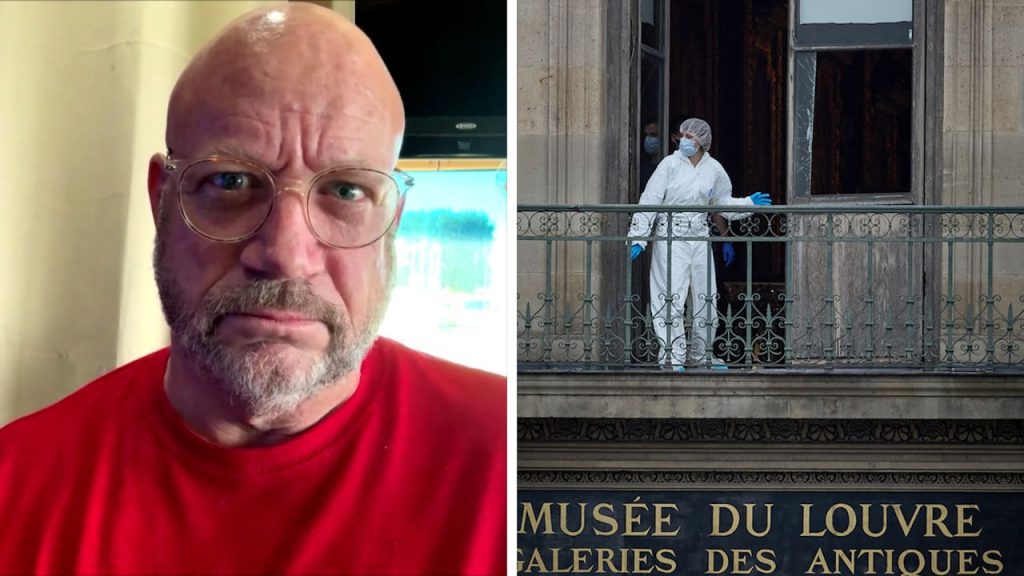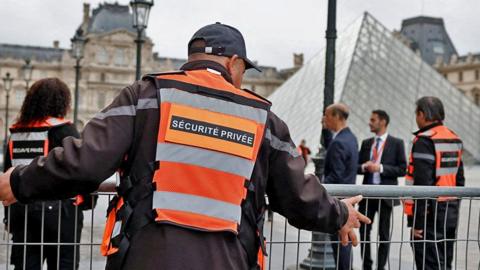Ex-Thief’s Take on Louvre Heist
The Ex-Thief’s Take on Louvre Heist offers a rare glimpse into the mind of someone who once lived on the other side of the law. As the world continues to unravel the details of the $100 million jewelry robbery at the Louvre, this perspective sheds light on how the operation unfolded—and where it went wrong. In this Ex-Thief’s Take on Louvre Heist, readers gain insight into the mistakes, risks, and realities behind one of the most talked-about museum crimes in recent history.
Introduction
The headline-making 2025 theft at the Louvre Museum in Paris didn’t just shock the worlds of art and heritage — it also caught the attention of one of America’s most notorious jewel thieves, who minced no words about how it was done and how badly it was botched. His commentary offers rare insight into the planning (and mis-planning) of high-stakes gem theft, and is a must-read for anyone in the jewelry or gemstone trade.

The Commentary: “Amateurs,” “Idiots,” and what they could have done differently
In an interview with the New York Post, former jewel thief Larry Lawton was blunt: he labelled the four suspects in the Louvre raid “amateurs” and “idiots” for their blunders during the heist. New York Post
What was particularly striking was his comment about how the thieves could have smuggled the stolen jewels out of France, suggesting the kind of desperate improvisation that exposes even sophisticated thieves to collapse. He quipped that concealing gems internally (in one’s body) is “believe it or not” a method he’s seen, calling attention to how low the threshold of risk becomes when vast value is involved. New York Post

What He Highlights: Where the Heist Went Wrong
From his experience, Lawton pointed out several failings in the Louvre operation:
- Leaving behind a glove at the scene. New York Post
- Dropping one of the crown items mid-escape (the tiara of Empress Eugénie) — a mistake unthinkable for a pro. New York Post

- Ill-conceived destruction of evidence: e.g., attempting to burn the truck/lift they used but getting interrupted. New York Post
- Misjudging the ability to liquidate such high-profile jewels intact, with Lawton emphasising that fencing such items will be nearly impossible because “the whole world knows about this robbery”. CBS News+1
His verdict: For a theft of this magnitude, the level of planning and precision was far below what you’d expect from a truly professional gang.
Lessons for the Jewelry & Gemstone Community
From this exchange, several key takeaways emerge for jewelers, collectors and anyone handling high-value gemstones:
- Traceability counts: When items are so famous they’re immediately recognisable worldwide, the chance of safe resale plummets. Lawton’s point underscores that the setting, provenance and display history can make a jewel unsellable.
- Setting matters: Many of the stolen pieces were part of historic sets (royal sets, parures) where the mountings are as important as the stones. When a thief tries to separate stones from settings, the value and story are destroyed.
- Risk isn’t just about the break‐in: As Lawton notes, the toughest part is what happens after the theft — moving, storing, selling. Poor planning here often causes failure.
- Publicity raises risk: The “sky-high profile” of the stolen items means they become toxic assets. Even if stolen, their ability to be traded drops sharply.
- Museum & display security also matters: The heist and the commentary together highlight that boasting a high-value collection is meaningless if you haven’t sealed the vulnerabilities surrounding it.
Why the Commentator’s Perspective Matters
It’s rare to get an unfiltered commentary from someone who used to do the kind of crimes now being investigated — and that’s why this interview stands out. For your readers who are gem trade professionals, this is more than crime drama: it’s a lesson in vulnerability, logistics, value, and legacy.

Conclusion
The Louvre heist may grab headlines for its audacity and value (estimated at around US $102 million). But what the former thief’s critique reminds us is this: the real failure wasn’t just the theft — it was the lack of planning for what comes after. For gems, jewellery, heritage collections, and the firms that manage them, the lesson is clear: the post-heist logistics matter just as much as the heist itself.
Whether you’re a collector, jeweller or simply a gemstone enthusiast, this moment is an opportunity to reflect on the fragility of historic pieces — and the importance of safeguarding not just stones, but stories.
For additional insights and a detailed timeline of events, please visit our in-depth article on the “Louvre Jewelry Heist.”
